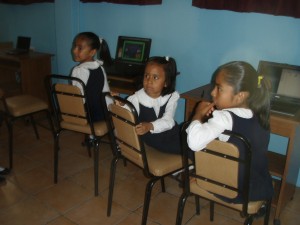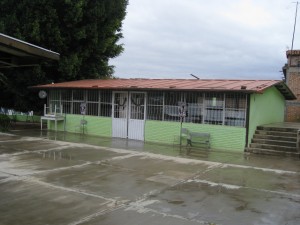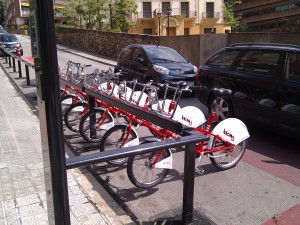Kids on Computers is planning a trip to the Huajuapan de Leon, Mexico area in June. If you can, please join us! If you can’t, please consider donating to help the labs we’ll be working on.
Most of us will be going down for a week or so. There are travel stipends available for those willing to spend a month helping in the area.
What could I possibly do to help? I ask myself this every time I go. Especially since I usually drag my kids along. Here are the things you can help with.
- Technical skills. If you can plug in computers, troubleshoot basic hardware problems, install Linux on lots of different kinds of old hardware, figure out why a mouse isn’t working, any of those things, you’ll be very much appreciated! We have to have at least one Linux guru on every trip. The rest of us follow directions. Upgrading 20 old computers in a school with no internet can be a long, manual process; it goes faster with more hands.
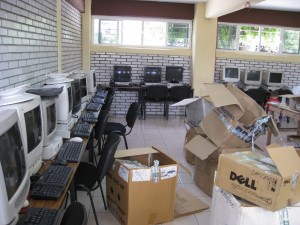
- Language skills. This trip is to Mexico. A large majority of the volunteers will not speak fluent Spanish. None of the kids and teachers in these schools will speak much English. If you can help translate, that’s a huge benefit. Not just when setting up the labs but when figuring out where to get supplies or going out for dinner. And if you don’t know the Spanish words for technical gadgets, it’s sometimes a really funny experience, especially when you’re not sure what you are trying to describe might look like. I’d never used ethernet crimpers until a trip to Mexico.
- Teaching skills. When we teach a class, we like to have lots of helpers. Helpers to show people how a mouse works, how to double click and how to change windows. Often neither the kids nor the teachers have used a mouse or a keyboard before, much less opened an app or saved a file.

- Logistical, herding cat skills. When you have 4 or 5 schools you are trying to work with, all spread out in different towns and 8 or 10 volunteers with different skills and you need a Spanish speaker with each group and someone who can figure out why the network is down in this school and someone who can update Linux on 4 laptops in another school … you need some logistical people. People who can help track who is where and what needs to be done.
- Documentation and note taking. We have all sorts of things we should and try to document. What computers are in which school? What’s installed on them? What finally worked to get Linux installed on that computer that had no USB drive? What should we bring next time? What worked in that class? What didn’t? What apps did the kids use the most? Every evening we try to spend some time working on this, but having someone dedicated to documenting what we’ve done, what works and what still needs to be done, who could do it while we are at the schools, would be great.
- Errand runner, make things out of paper clips person. We are always missing something, short something, need something. We soldered ethernet cables at one school! After stringing them across a road!
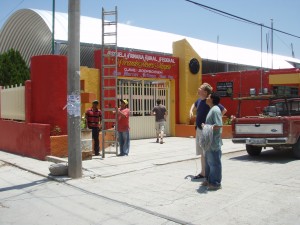
Besides just logistical efforts, there’s the benefit to you and what your support brings to the area.
- Support local efforts. I recently read this effort that said international volunteers are often just in the way. I agree, that sometimes local resources exist and if they are there, you should use them. In our case, I think there are very few people with technical skills in the little towns we go to. We do try to pull in local university students and technical people whenever possible. And we have to go back frequently, because going once, setting things up and then leaving isn’t helpful. They get new teachers, forget passwords, computers break.Â

With the travel grants, we hope to get local university students from nearby towns involved. But the other major benefit of bringing in outside people is that you get local people excited about it.When we set up 18 de Marzo, because we were there, we were able to bring in local media, the local school district, the mayor … because we visited the school, the school got more interest from local supporters.

Unfortunately, they still don’t have internet access nor an accessible high school. But they do have a super involved parent organization and a full time computer teacher funded by student families! - Spread the word. If you go on vacation to Huajuapan de Leon, you’re going to have the experience of a life time. And you are going to share your pictures and stories with all your family and friends. A few of them may join us next time. Or donate. Or just be more aware of the world.
- Spread your horizons. I take my kids so that they can see that kids have fun without Xboxes. They have a blast playing soccer and making new friends. And, yes, they did find the only arcade machine within miles. In the back corner of a little tiny store tucked away on a side street.

What to expect?
- It’s slow. Most of us are used to scheduling every minute of our time and being as efficient as possible. It doesn’t work that way on a volunteer trip to rural Mexico. Just getting there takes a while. We fly down to Oaxaca, spend the night. Walk across town the next day, get a van ride, drive through the mountains, walk to our hotel. Work doesn’t start until 2-3 days after you leave home!
- It’s not perfect. This is a volunteer run trip. And each trip presents different challenges. And not everyone has phones. Almost no one has internet. Getting from school to school means coordinating rides, arriving to find out they weren’t ready for you or the teachers were on strike, figuring out what equipment you need, what some of you can do while a couple of people drive all the way back to town to buy as much ethernet cable as they can, waiting around while your most seasoned Linux guru figures out why the installs aren’t working, … if you enjoy the people, what you are trying to do and use the time to get to know each other and the schools better, it’s great. If you came just to do technical work, it’d be frustrating.
- Friendly people. The other volunteers and especially the teachers, families and students are awesome. Everyone is appreciative, helpful and outgoing. Just super. The parents usually feed us. Lots of people give us rides. Some people open up their houses. My kids make friends everywhere. Terrific people.
- Not completely modernized. We stay in Huajuapan which is a decent sized small city. It’s got lots of restaurants and a few hotels. Grocery stores and mobile phone shops. And the water is often not hot. And the sidewalks can prove challenging. You might end up riding in the back of a pickup truck. Or walking a long ways in very hot, humid weather. On the good side, there’s no McDonalds and all the little shops are very interesting and very reasonable.
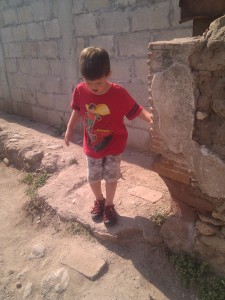
- Beautiful. The area around Huajuapan de Leon is gorgeous mountainous country side.
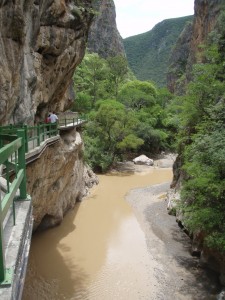
- Pretty inexpensive. Airfare is a bit pricey but after that it’s not expensive. Hotel rooms run $10-40/night. Dinners might run $3-15/person depending on what you decide to eat. So you can stay there pretty inexpensively. The van ride to Huajuapan is so cheap, I can’t figure out how the price of the ride from Oaxaca can cover gas. I spent a good hour of the trip doing math in my head and I have no idea how they are making a profit. Cabs around town are just $1-2, but cabs out to the other towns where are labs are can be quite pricey. (The cab drivers are friendly though. Avni and I took a cab out to Saucitlan de Morelos once and the cab driver was not just worried about leaving us there when we couldn’t find our friends, he was worried about the whole town because they had no phones and no cell service!)
So should you come? If any of that sounds fun, absolutely. We need you and you’ll be doing good in the world while having fun. If you can’t, no worries. If possible, contribute to some cause to make the world a better place. You can donate to Kids on Computers! 🙂
